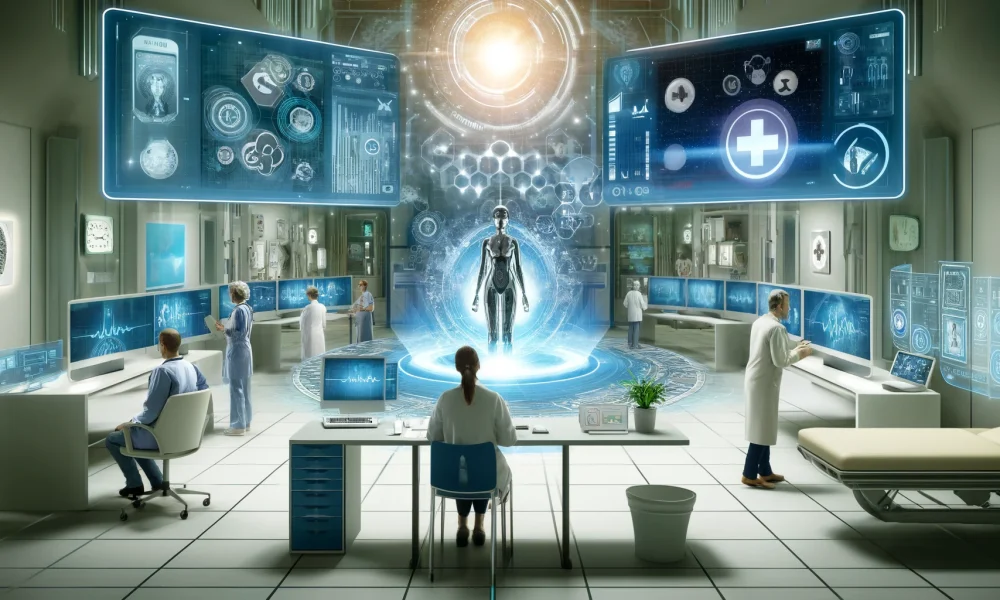
How medical simulations are transforming telehealth training
Telehealth has rapidly emerged as a vital component of healthcare delivery, especially in the wake of the covid-19 pandemic. As telehealth services continue to expand, there is a growing need for effective training programs to prepare healthcare providers for this mode of care. Medical simulations are playing a transformative role in telehealth training, offering advanced techniques and immersive experiences that go beyond traditional training methods. This post explores how simulations are revolutionizing telehealth training, supported by statistics and real-world examples, while delving into aspects that are often overlooked.
The rise of telehealth
Telehealth involves the use of digital communication technologies to provide healthcare services remotely. This includes virtual consultations, remote monitoring, and telemedicine. The adoption of telehealth has been accelerated by the pandemic, making it essential for healthcare providers to be proficient in its use.
Statistics: according to the american medical association (ama), telehealth visits increased by 1,000% during the early months of the covid-19 pandemic, and this trend is expected to continue.
The role of simulations in telehealth training
Enhancing communication skills
Effective communication is crucial in telehealth, where non-verbal cues and physical presence are limited. Simulation training helps healthcare providers develop strong communication skills tailored to the virtual environment.
Example: a simulated telehealth scenario can involve role-playing with actors or avatars to practice virtual patient consultations, focusing on clear verbal communication, active listening, and empathetic responses.
Statistics: a study published in telemedicine and e-health found that simulation-based training improved telehealth communication skills by 35% compared to traditional training methods.
Improving technical proficiency
Healthcare providers must be adept at using telehealth platforms and digital tools to deliver care effectively. Simulation training offers hands-on experience with these technologies, ensuring providers are comfortable and proficient.
Example: simulated training sessions can include navigating telehealth software, setting up virtual appointments, managing digital patient records, and troubleshooting common technical issues.
Statistics: according to a report by the healthcare information and management systems society (himss), simulation training increased technical proficiency in telehealth platforms by 40%.
Simulating complex clinical scenarios
Simulations can replicate complex clinical scenarios that healthcare providers might encounter during telehealth consultations. This prepares providers to handle a wide range of medical conditions and emergencies remotely.
Example: a simulation can involve managing a patient with chronic conditions, such as diabetes or hypertension, using remote monitoring tools and making clinical decisions based on virtual assessments.
Statistics: research in the journal of medical internet research shows that simulation training improved the ability of providers to manage complex clinical scenarios in telehealth by 28%.
Enhancing patient engagement and trust
Building patient engagement and trust is essential in telehealth, where face-to-face interactions are limited. Simulation training helps providers develop strategies to engage patients effectively and build rapport in a virtual setting.
Example: providers can practice techniques for making virtual consultations feel more personal, such as using the patient’s name frequently, maintaining eye contact through the camera, and ensuring a professional virtual setup.
Statistics: the journal of telemedicine and telecare reports that simulation-based training increased patient engagement and satisfaction in telehealth services by 25%.
Beyond the basics: advanced benefits of simulation training
Integrating virtual reality (vr) and augmented reality (ar)
Vr and ar technologies offer immersive training experiences that enhance the realism and effectiveness of telehealth simulations. These technologies can create highly realistic patient interactions and clinical scenarios.
Example: vr simulations can immerse providers in a virtual clinical environment, allowing them to practice telehealth consultations with lifelike avatars that display realistic symptoms and behaviors.
Statistics: a report by pwc found that vr and ar in medical training can improve learning retention rates by 75%.
Real-time feedback and performance analytics
Advanced simulation platforms provide real-time feedback and performance analytics, allowing healthcare providers to identify areas for improvement and track their progress over time.
Example: during a simulated telehealth consultation, providers can receive immediate feedback on their communication techniques, clinical decision-making, and technical skills, with detailed analytics to guide further training.
Statistics: the journal of continuing education in the health professions found that real-time feedback in simulation training improved clinical performance by 30%.
Interprofessional collaboration
Telehealth often involves collaboration among various healthcare professionals. Simulation training can facilitate interprofessional education, ensuring that all team members are aligned and can work together effectively in a virtual environment.
Example: a multidisciplinary simulation scenario can involve doctors, nurses, pharmacists, and therapists collaborating on a telehealth case, improving their coordination and communication.
Statistics: according to the journal of interprofessional care, simulation training enhanced interprofessional collaboration in telehealth by 25%.
Continuous professional development
Simulation training supports continuous professional development, allowing healthcare providers to stay updated with the latest telehealth technologies and best practices.
Example: regular simulation sessions can be incorporated into ongoing professional development programs, ensuring that providers maintain and enhance their telehealth skills.
Statistics: the american medical association (ama) highlights that continuous simulation training leads to a 20% improvement in long-term skill retention.
Conclusion
Medical simulations are playing a pivotal role in transforming telehealth training by enhancing communication skills, improving technical proficiency, simulating complex clinical scenarios, and building patient engagement and trust. By integrating advanced technologies like vr and ar, providing real-time feedback, fostering interprofessional collaboration, and supporting continuous professional development, simulation training offers a comprehensive and effective approach to preparing healthcare providers for telehealth services. As telehealth continues to grow, the importance of simulation training in maintaining high standards of care cannot be overstated.


















